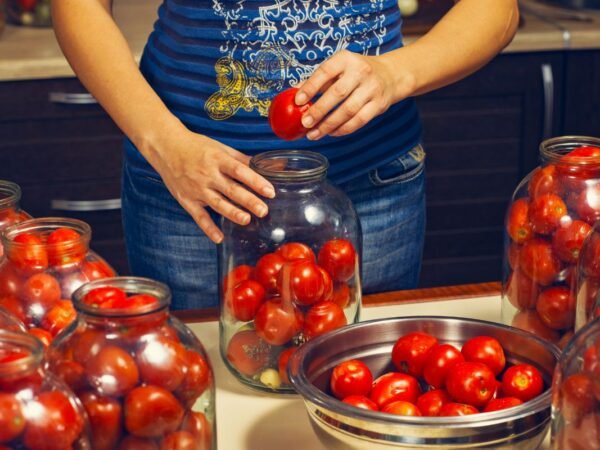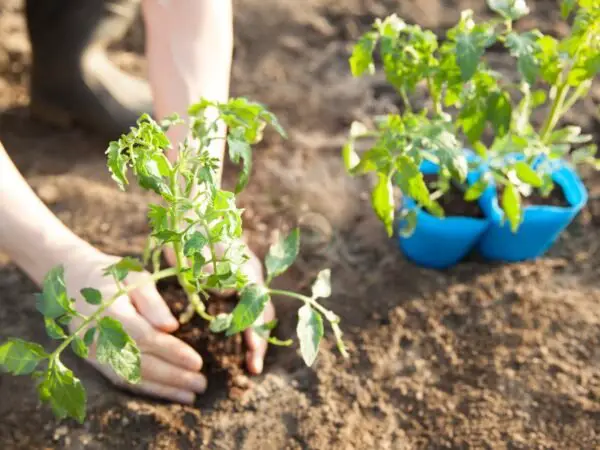Ever wondered how to savor the juicy burst of ripe homegrown cherry tomatoes? Picking these petite ripe fruit at just the right moment is key. With their popularity among gardeners, mastering the art of harvesting cherry tomatoes, future planting, and vine ensures a delectable yield. The texture, flavor, and overall quality hinge on knowing precisely when to pick tomatoes from the vine. Lack of knowledge about the ripening process can cause disappointment in taste and texture. In this guide, we'll share expert tips on picking cherry tomatoes for maximum flavor and sweetness. From understanding the paper-thin skin to using cages for support, we've got you covered with all you need to know.
Recognizing Cherry Tomato Maturity
Ripening Stages
Cherry tomatoes, like many fruits, go through different ripening stages. Understanding these stages of the process is crucial for picking them at the right time. When they reach their peak ripeness on the vine, cherry tomatoes offer the best flavor and texture. The stages typically include green, turning color (orange or red), and fully ripe (deep red). /// By recognizing these stages, you can ensure that you pick your cherry tomatoes at their prime. ///
Identifying the ripening stages of cherry tomatoes on the vine is vital for optimal flavor. As they progress from green to red or orange stage, their sugar content increases while their acidity decreases. This shift in composition contributes to the fruit's sweetness and balanced taste when fully ripe. For example, if you pick a cherry tomato too early—when it's still mostly green on the vine—you might find it lacking in sweetness and juiciness compared to one picked at its full ripeness.
Color Indicators
The color of cherry tomatoes serves as a reliable indicator of their ripeness. Different varieties may exhibit unique color indicators at different stages as they mature; some turn deep red when ripe while others take on an orange hue. Knowing these distinctive color changes at the stage helps in determining when to harvest them for consumption or storage.
Understanding the specific color indicators associated with different varieties assists in picking only those that are truly ripe and ready to be enjoyed. For instance, certain types of cherry tomatoes are considered fully matured once they develop a rich golden-orange tone instead of a classic deep red shade.
Size and Firmness
Ripe cherry tomatoes have discernible characteristics related to size and firmness that signal their readiness for picking. They should have reached an ideal size—small but plump—and possess a gentle firmness without being overly soft or squishy.
Optimal Harvest Timing
Daily Inspection
Regularly inspecting cherry tomato plants is crucial for identifying ripe fruits. This daily routine ensures that no ripe cherry tomatoes are missed during harvest. Consistent daily inspection also helps in maintaining a continuous harvest, ensuring a steady supply of fresh cherry tomatoes throughout the growing season.
Conducting daily inspections allows you to monitor the progress of your cherry tomatoes closely. By checking them regularly, you can identify the right time to start picking and ensure that none of the fruits become overripe or spoiled on the vine. This practice not only maximizes your yield but also guarantees that you enjoy your tomatoes at their peak flavor.
Weather Considerations Weather conditions play a significant role in determining the optimal time for harvesting cherry tomatoes. Understanding how different weather patterns impact the ripening process is essential for planning an efficient harvest schedule. For example, warmer temperatures generally accelerate ripening, while cooler temperatures may slow it down.
Moreover, being aware of weather considerations enables you to make adjustments based on forecasts. If there's an expectation of prolonged rain or extreme heat, you can plan your harvest accordingly to prevent any potential damage to the fruits. By staying informed about upcoming weather changes and patterns in your area, you can optimize the timing of cherry tomato picking and ensure a successful yield.
Harvesting Techniques
Gentle Picking
Gentle picking is essential for harvesting cherry tomatoes. It prevents damage to both the plant and the fruit. Proper picking techniques ensure minimal stress on the cherry tomato plant, promoting continued fruit production. When you gently pick cherry tomatoes, you avoid causing harm to the delicate stems and branches of the plant.
Gentle picking allows you to harvest ripe fruits without inadvertently damaging unripe ones nearby. By carefully plucking only fully ripened cherry tomatoes, you help maintain a healthy growing environment for other developing fruits on the same cluster or vine.
Clipping Methods
Employing proper clipping methods is crucial when harvesting cherry tomatoes. This technique minimizes damage to the plant and surrounding fruits while ensuring successful harvesting outcomes. Knowledge of effective clipping techniques plays a vital role in maintaining overall plant health and productivity.
Maximizing Flavor at Harvest
Sun Exposure
Sun exposure significantly impacts the ripening process of cherry tomatoes. When cherry tomatoes receive ample sunlight, they tend to ripen evenly and develop a more robust flavor. Understanding sun exposure is crucial for predicting when the tomatoes will be ready for picking. By monitoring how much sunlight your plants receive, you can better anticipate the optimal times for harvesting flavorful cherry tomatoes.
Proper sun exposure helps in determining the ripening times more accurately. If your cherry tomato plants are getting plenty of sunshine, it's likely that they will reach their peak ripeness sooner rather than later. This insight allows you to plan ahead and prepare for an abundant harvest of delicious cherry tomatoes.
Monitoring sun exposure also aids in deciding on the most suitable time to pick your cherry tomatoes. When you keep track of how much sunlight your plants are receiving, you can make informed decisions about when to harvest them at their flavor peak.
Watering Practices
Adopting proper watering practices plays a vital role in cultivating healthy and flavorful cherry tomatoes. Consistent watering routines contribute to even ripening and overall plant health, resulting in higher-quality fruits with exceptional taste.
Consistent watering supports even ripening by ensuring that all parts of the plant receive adequate moisture regularly. This consistency leads to uniform growth and development across all the fruits on each vine, enhancing their flavor profile as they mature.
Understanding your plants' specific watering needs is essential for achieving high-quality harvests consistently throughout the growing season. By paying close attention to how much water your tomato plants require and providing it consistently, you can ensure that every fruit reaches its full potential in terms of flavor and texture.
Varietal Differences in Harvesting
Size Variations
Cherry tomatoes come in various sizes, depending on the specific variety and growing conditions. Recognizing these size variations is crucial. For instance, smaller cherry tomato varieties may reach peak ripeness sooner than larger ones. Understanding size differences among cherry tomato types allows for an accurate assessment of their ripeness. This knowledge ensures that you harvest them at the perfect time to enjoy their optimal flavor.
Differentiating between small and large cherry tomatoes enables gardeners to identify when each type is ready for harvesting. Smaller varieties such as "Sweet 100" or "Sun Gold" typically reach full maturity earlier than larger types like "Black Cherry." By recognizing this distinction, you can effectively plan your harvest schedule and ensure that you pick each variety at its prime.
When checking your cherry tomato plants, observe how the fruits look compared to their expected size based on the variety planted. If they match the anticipated size for their type, it's a good indicator that they are ripe and ready for picking.
Taste Profiles
Understanding the taste profiles of different cherry tomato varieties plays a significant role in determining when to pick them. Each type of cherry tomato offers a unique flavor profile, ranging from sweet and tangy to rich and savory. This diversity influences decision-making during harvesting because it helps determine which varieties are best suited for immediate consumption or specific culinary uses.
For example, if you have both "Sungold" (known for its sweetness) and "Black Cherry" (recognized for its complex flavor) growing in your garden, knowing their taste profiles will guide you in selecting the ideal time to pick each one. You might choose to harvest Sungold tomatoes when they're at their sweetest while waiting a bit longer before picking Black Cherry tomatoes to allow their flavors to fully develop.
Post-Harvest Handling
Proper storage methods are crucial for maintaining the quality of freshly picked ripe cherry tomatoes.It's essential to keep them at room temperature, away from direct sunlight. Placing them in a single layer on a tray or shallow container prevents bruising and allows air circulation, preserving their flavor and texture.
Knowing how to store ripe tomatoes is vital because it prolongs their shelf life and flavor. Keeping ripe cherry tomatoes in the refrigerator can diminish their taste and texture, so it's best to consume them fresh whenever possible. Proper storage not only maintains freshness but also reduces food waste by preventing spoilage.
Storing ripe tomatoes correctly is key as it preserves their freshness for longer periods. By avoiding overcrowding and inspecting regularly for any signs of overripeness or decay, you can ensure that each tomato stays in optimal condition until consumed.
Extending the Harvest Season
Successive Planting
Successive planting is a smart strategy to extend the harvest season for cherry tomatoes. By staggering the planting dates, you can ensure a continuous supply of fresh fruits throughout the growing season. For example, if you plant one batch in early spring, you can plan to sow another round of seeds or transplant seedlings around two weeks later. This approach optimizes overall yield by preventing a glut of ripe tomatoes all at once.
Knowing when to start successive planting is crucial for maintaining a steady harvest. Typically, after the last frost date in your area is an ideal time to begin successive plantings. This ensures that each subsequent batch has favorable growing conditions and plenty of warm days ahead for fruit maturation.
Microclimate Utilization
Understanding and utilizing microclimates can have a significant impact on ripening times and overall fruit quality for cherry tomatoes. Microclimates are small areas within your garden that have unique temperature, humidity, and sunlight characteristics due to factors like shade from buildings or trees, proximity to bodies of water, or differences in elevation.
By strategically placing your cherry tomato plants in various microclimates within your garden, you can optimize harvesting opportunities throughout different areas. For instance, if one area receives more sunlight and warmth than others due to its positioning against a south-facing wall or near reflective surfaces like concrete paths or light-colored fences, those plants may mature faster than those planted elsewhere.
Making use of microclimates also allows you greater control over ripening processes since you can move plants as needed based on their stage of growth and environmental conditions. This means that even if there's an unexpected cold snap affecting one part of your garden during late summer while other areas remain warmer as they're sheltered from winds by structures or vegetation barriers.
Dealing with Overripe Tomatoes
Cherry tomatoes are incredibly versatile in the kitchen. They can be used in a variety of culinary creations, from salads and salsas to sauces and garnishes. Their sweet flavor and vibrant color make them an ideal ingredient for adding a pop of freshness to any dish.
Knowing the culinary uses of cherry tomatoes is essential as it provides inspiration for creating new recipes and dishes. For example, if you're planning to make a fresh bruschetta topping, you'll want to pick your cherry tomatoes when they are firm and just ripe. On the other hand, if you intend to slow roast them for a rich pasta sauce, slightly overripe cherry tomatoes might be more suitable due to their concentrated sweetness.
Increasing Cherry Tomato Yields
Frequent Harvesting Benefits
Frequent harvesting of cherry tomatoes offers numerous advantages. When you pick ripe cherry tomatoes regularly, it stimulates the plant to produce more fruits. This continuous fruit production ensures a longer and abundant harvest season. By understanding the benefits of frequent harvesting, gardeners can support sustained plant productivity and health. The increased yields resulting from frequent picking contribute to a bountiful supply of fresh cherry tomatoes for consumption or sharing with others.
Moreover, regular harvesting prevents overripe fruits from robbing the plant's energy, allowing it to focus on producing new blossoms and setting additional fruit. This practice not only boosts yields but also extends the overall fruiting period of cherry tomato plants. As a result, gardeners can enjoy an extended season of flavorful cherry tomatoes.
-
Continuous fruit production
-
Prolonged harvest season
-
Prevents overripe fruits from draining plant's energy
Pruning for Productivity
Proper pruning techniques play a crucial role in enhancing the productivity and quality of cherry tomato plants' fruits. Knowing when and how to prune is essential for supporting optimal growth and development while maintaining overall plant health. Efficient pruning contributes significantly to healthier plants by removing unnecessary foliage that may block sunlight or air circulation around the fruits.
By trimming excess leaves and non-productive branches, gardeners allow better light penetration into the inner parts of the plant, promoting improved photosynthesis and better fruit development. Well-pruned plants are easier to manage during harvests as they offer convenient access to ripe cherries without having to navigate through dense foliage.
-
Trimming excess leaves enhances light penetration.
-
Removes non-productive branches for better airflow.
-
Easier access during harvests due to efficient pruning.
Preparing for End-of-Season Harvest
Before Frost Arrival
Taking precautions before frost arrival is crucial to protect the remaining crop of green cherry tomatoes from damage or loss due to cold temperatures. By knowing what steps to take before frost arrives, you can safeguard unripe fruits from spoilage or decay caused by low temperatures. These preparations help maximize final yields before winter sets in, ensuring that all your hard work throughout the growing season pays off.
Before the arrival of frost, it's essential to cover your tomato plants with a protective fabric such as row covers or cloths. This shields the plants from freezing temperatures and keeps them warm enough to prevent damage to the fruits. Consider picking all mature green tomatoes close to their blossom end and bringing them indoors where they can continue ripening naturally.
One way to prepare for frost is by creating a makeshift greenhouse using stakes and plastic sheeting over your tomato plants. This provides an extra layer of protection against cold weather and allows you more time for harvesting any remaining green cherry tomatoes.
Green Tomato Ripening
Knowing how to ripen green tomatoes after harvest enables you to make use of unripe fruits that were picked before frost or at the end of the season. By employing various green tomato ripening methods, you can ensure full utilization of all harvested fruits without letting anything go to waste.
After picking unripe cherry tomatoes, store them in a single layer inside a cardboard box or paper bag along with a ripe banana or apple. The ethylene gas emitted by these ripe fruits helps speed up the ripening process of your green cherry tomatoes.
Another effective method for ripening green cherry tomatoes involves placing them on a windowsill where they can receive indirect sunlight while still staying relatively warm. Check on them regularly and rotate any that are turning red so they ripen evenly on all sides.
Conclusion
You've now gained a deeper understanding of the art of picking cherry tomatoes. By recognizing the signs of maturity, mastering optimal harvest timing, and implementing effective harvesting techniques, you can savor the best flavors from your cherry tomatoes. Remember to consider varietal differences and handle overripe tomatoes with care to maximize your yields. Post-harvest handling and strategies for extending the harvest season will help you enjoy a bountiful supply. As you prepare for the end-of-season harvest, these insights will empower you to make the most of your cherry tomato crop.
Now armed with these valuable techniques, head out to your garden and put your newfound knowledge into action. Whether you're a seasoned gardener or just starting out, these tips will elevate your cherry tomato picking game and ensure a delightful harvest every time.
Frequently Asked Questions
How can I tell when cherry tomatoes are ripe?
You can determine the ripeness of cherry tomatoes by their color and firmness. Look for a deep, vibrant color and a slight give when gently squeezed.
What is the best time to harvest cherry tomatoes?
Harvest your cherry tomatoes when they are fully colored, firm, and have a glossy appearance. Early morning or late afternoon is ideal as the fruits will be cooler and less likely to wilt quickly.
How should I handle harvested cherry tomatoes?
Handle them carefully to avoid bruising or damaging the delicate skin. Place them in shallow containers to prevent crushing and store at room temperature for optimal flavor.
Can I extend the harvest season of my cherry tomatoes?
Yes, you can extend the harvest season by regularly pruning plants, providing adequate water and nutrients, and protecting them from extreme weather conditions.
What should I do with overripe cherry tomatoes?
Overripe cherry tomatoes are perfect for making sauces or soups since their intense sweetness enhances flavor. You can also use them in salads or roast them for added depth of taste.
Image Source: Paid image from CANVA




